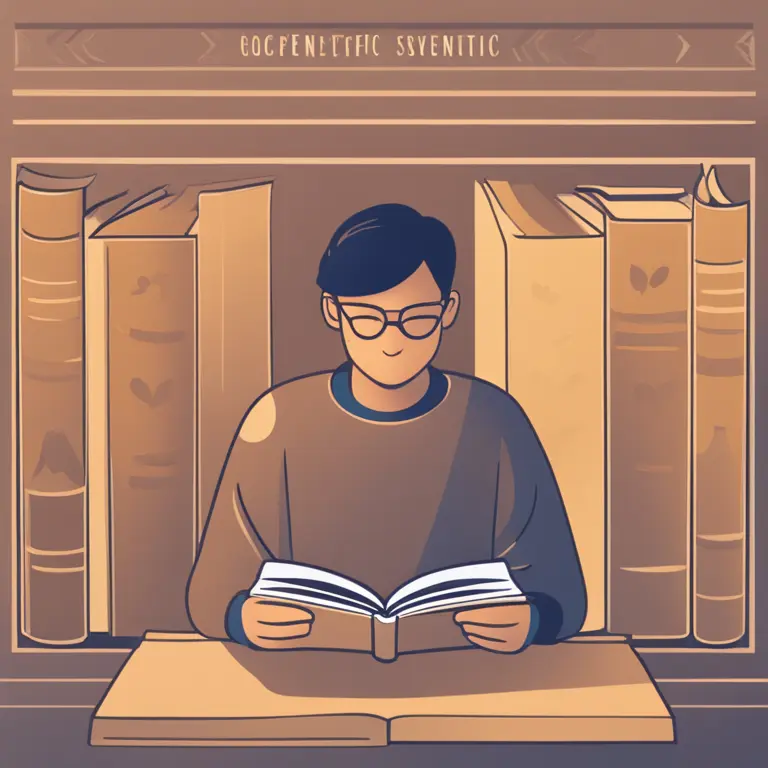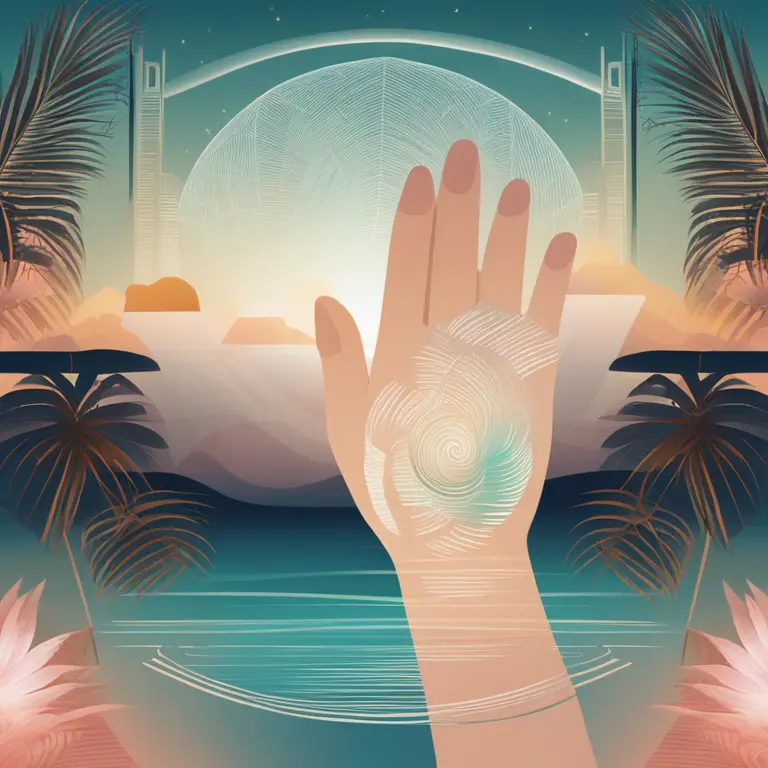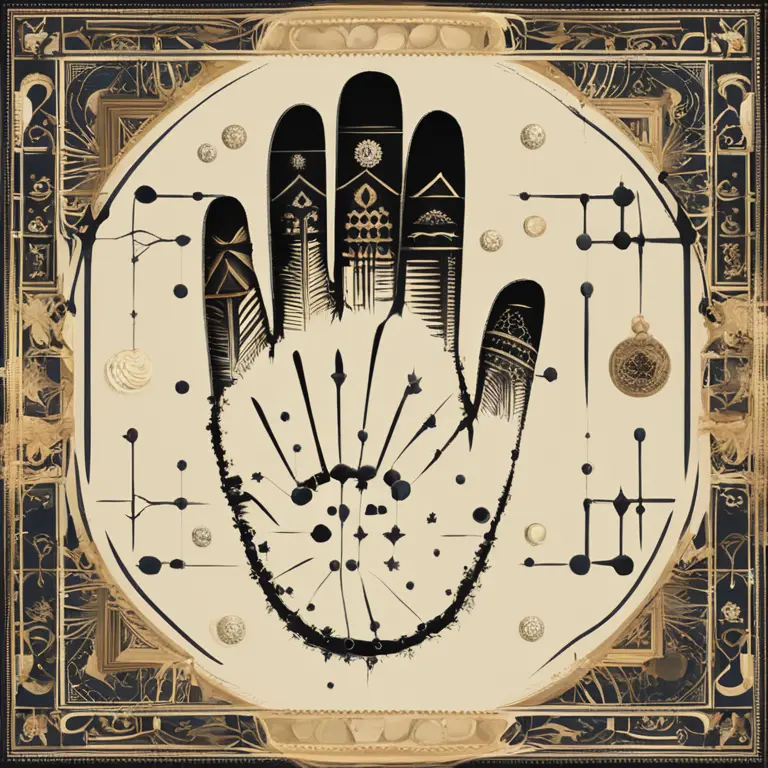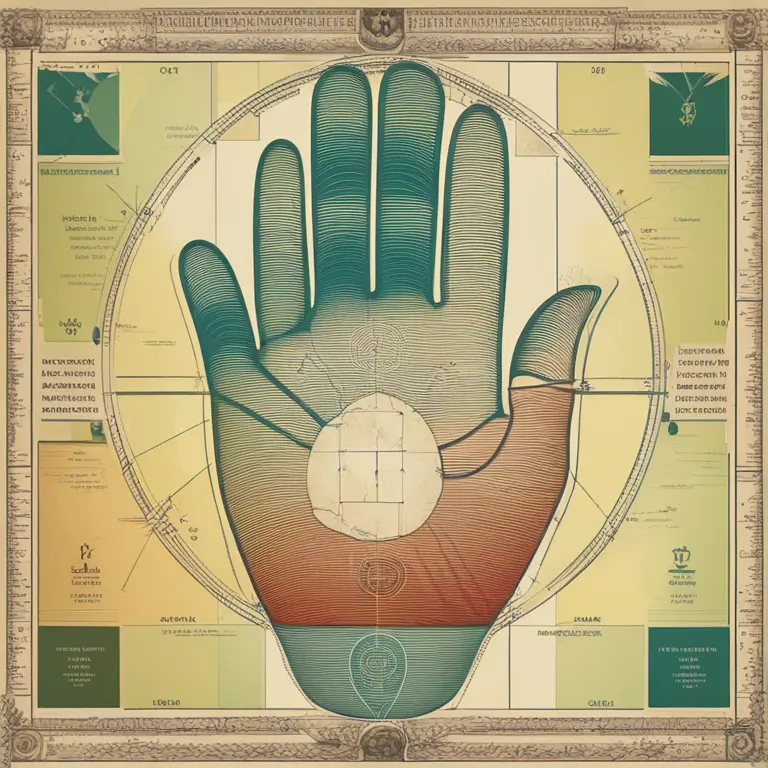
The Precision of Palmistry: How Accurate Can It Be?
Evaluating palmistry's validity as a tool for insight, this article delves into the accuracy of palm readings and their place in modern life.
article by Nora Pennington
Palmistry's Roots and Modern Perspective
The practice of palmistry, or chiromancy, has roots that reach deep into history, with evidence of its use in various ancient cultures such as Indian, Chinese, and Egyptian civilizations. Today, it is both embraced and skeptically viewed, existing in a space between accepted psychological practices and fringe mysticism. As we delve into the world of palmistry in 2024, it's vital to acknowledge its transition from an ancient art to a modern curiosity that many seek for personal insight. While scientific communities often dismiss palmistry as a pseudoscience, it continues to captivate the imagination of those yearning for understanding of their own life paths.

Critical Evaluation of Palmistry Practices
Despite its longstanding history, the accuracy of palmistry remains a controversial topic. Critics argue that its principles are not grounded in empirical evidence and reproducible results—cornerstones of scientific validity. Supporters, however, claim that palmistry offers an interpretative framework that can mirror an individual's personality and potential life outcomes. It's important to understand that palm readings are not predictions but interpretations of the lines and features of one's hands, which are said to change over time along with the person's life experiences and choices.

The Subjectivity of Palm Readings
A core element of palmistry's accuracy lies in the subjective nature of the practice. Unlike standardized psychological tests or medical diagnostics, palm readings are deeply personal and greatly reliant on the skills of the reader. A proficient palmist may draw on a combination of intuition, knowledge of traditional interpretations, and psychological insight. The practitioners argue that their accuracy improves with experience and the subtle art of synthesizing information gleaned from the hand's features with the sitter's personal circumstances and queries.

Scientific Scrutiny and Studies
Since the scientific method demands replicable results under controlled conditions, palmistry has struggled to find its footing among scientifically backed disciplines. Few scientific studies have been conducted on the accuracy of palm readings, and those that have typically conclude minimal validity when subjected to rigorous analysis. However, the lack of scientific validation does not deter enthusiasts and practitioners who find value and, at times, uncanny relevance in the readings they receive or give.

Skepticism and Personal Testimonies
Skepticism surrounding palmistry often cites the Forer effect, a psychological phenomenon wherein individuals believe vague, generally applicable statements to be highly accurate for them personally. Yet, notwithstanding skepticism, many individuals report personal anecdotes of astonishingly accurate readings that resonate deeply with their life experiences. These accounts contribute to the ongoing interest and faith in palmistry, sustaining its practice across cultures and generations.
Integrating Palmistry into Modern Life
In the digital age of 2024, palmistry has adapted, with online platforms providing palm readings to users around the globe. This innovation brings the ancient art to a wider audience but also questions the practice's personal touch and the potential influence of technology on its accuracy. Ultimately, the use of palmistry as a tool for self-reflection or entertainment depends on individual belief and the value one places on the insights gained from a palm reading.
Published: 1/29/2024
Modified: 1/29/2024
More predictions
Come back here soon to learn more about yourself and your future


Unlocking The World of Palmistry Healing
Discover the nuances of palmistry healing, the ancient art that interprets hands to promote wellness and guide life choices.


The Basics of Palmistry Explored
Delve into the basics of palmistry and its technique for reading the lines and shapes in your hands to gain insights into your personality and future.


The Secrets Hidden in Your Palm's Health Line
Discover the significance of the health line in palmistry and how it may offer insights into your well-being and vitality.